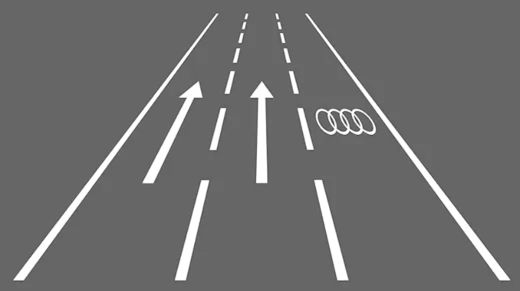Sophie Morgan, who I mentioned in that last story, was on BBC3 last night in fronting a documentary about fatal road accidents. You can still catch it on iPlayer for the usual limited time.
I started watching it with a very negative mind – Ms Morgan’s attempts (deliberate or otherwise) to try and pin the blame for accidents on poor levels of driving instruction were still fresh. However, it became clear quite early on that the point of this programme was quite different. If anything, it contradicts what Ms Morgan has to say about “training” because it clearly identifies attitude and inexperience as the major causes of accidents.
Ms Morgan went to a boy racer meeting (the “Trafford Motor Cruise”). Interviewing some of the dickheads present, she got quotes such as:
Speed’s like a drug, innit, really?
Are you here for a race?
Yeah! It gets your adrenalin off goin’.
That second one was from a young girl, who looked barely old enough to drive (so still with wet ink on her licence). If you search for that particular “cruise” on Google, you’ll find forum threads with such quotes as this:
hey peeps,
anyone that goes or is interested in going to a well known cruise on the border of eccles and trafford park in manchester just give us a shout back.
i travel down at around 21.30 every friday night, can be anything from 20 to 70 cars there. ANY car is welcome in any condition its mainly to chill and watch races down the straight. theres regularly some Evo’s and Subaru’s going at it as well .
anyone interested in joining ?
its a straight road with a dead end at the bottom, it was basically made for HGV’s to park up on the side to sleep for the night, good surface, makes a good drag strip.
so very legal then…. i hope they dont go over the 30mph limit set down these industrial roads…. i know where you can do 135mph+ legally
course its legal , the police come most weeks, but they dont bother to do anything, too many people really, they just cruise down looking all mean, ask a few questions, then get off again.
they ask stupid questions really, like “what are you doing here” which gets the same answer “just chillin” what else would a load of modded cars be doing together ? racing each other down the big long road ? noooo…dont be silly
Back to the documentary, it was harrowing to see the aftermath of the crashes. But it was also surprising to hear the parents of the motorcyclist who was apparently killed on a “cruise” while driving at speeds approaching those of the Space Shuttle on re-entry – having only had his licence for a year -appearing to defend his behaviour somewhat. His mother said he “never grew up”, and his dad likened him and his motorcycle to a young girl and her horse:
…[It’s like] young girls and horses. What do you do? Do you take the horse off them because they’ve fallen off twice [spreads hands questioningly]…
Unfortunately, it’s not the same thing at all. Not by a million miles. It just illustrates something else I’ve said in various articles on here – that the problems go far deeper and farther back in time than just the individual involved. And by that, I mean that the parents (and society, as it deals with youngsters) are directly responsible for much of this attitude.
At about seventeen and half minutes into the documentary, Ms Morgan says something that I have said again and again:
One in three of all people who die on the roads is under 25. Experts say that that’s because young drivers are more likely to take risks.
But with less experience, they are less able to cope with those risks – especially if something goes wrong.
So, that’s two nails Ms Morgan’s hit on the head. Wrong attitude, and not as good as they think they are. You can’t help note the irony between this conclusion, and that other BBC show – Barely Legal Drivers – where an ex-cop talks up the most appalling driving to try and find good where none exists.
Although it might seem unfair to pursue this particular line of thinking in the context of this documentary, I have been unable to find out exactly what happened in the case of Ms Morgan’s accident other than the sanitised couple of sentences on the many websites and media stories in which she features. However, in this programme it is made clear that she was speeding, and she openly admits that it was her fault and she was driving badly, and all credit must go to her for that. But in the last 10 minutes she ruins it all by arguing that new drivers need to be trained better! I cannot for the life of me see how she links her own poor judgement and speeding – and that of all the others featured in the programme – with the need for better driver education! Better upbringing, yes. But not better driving tuition.
No amount of skid pan training is going to stop people behaving like prats, and no driving instructor teaches them to behave that way, either. The whole programme screamed out loud that attitude and behaviour were the key issues in all the accidents discussed. Skid pan training might save the bad driver in question – but what about the innocent bystander? Just because you can handle an artificial skid, it doesn’t mean you can handle a real one, nor does it suddenly become OK to drive at 70 in a 30mph zone, and to T-bone someone’s car as they emerge from a side street. Ms Morgan has it all mixed up.
I find it really difficult to come to terms with the fact that someone so engaging and intelligent could draw such wrong conclusions from the data, and I can’t help think that her obvious bitterness about her accident and resulting disability is clouding her judgement. I agree with her that shock tactics might have some value in addressing the issue – in part. I disagree that this value would be as great as she seems to imply. Since time immemorial, young people have generally ignored facts and gone their own way. You see it with smoking, drug use, and behaving stupidly or illegally over all manner of things – and driving is no different. No matter how “shocked” they are at hard-hitting road shows, the majority of those attending such events will fall back to the teenage standard mode of behaviour quite easily. That’s where the problem is rooted. It’s not that these things don’t have a purpose – but we have to be careful not to overstate that purpose.
The programme concludes with Courtney Meppen-Walter being jailed for the the crash which killed two people and left another brain damaged. Again, Ms Morgan suggests that if he’d “better understood the dangers” then it wouldn’t have happened. What is there to “understand” about a 30mph speed limit? Meppen-Walter was doing twice that, and no instructor would ever have told him that was OK. Meppen-Walter knew it was wrong. Ms Morgan further argues that “we’re not preparing people for the roads” – another shot that misses the mark completely by suggesting that training rather than attitude is the issue.
Putting all of that aside, I’m going to use the programme as part of my own training package. If it shocks even one person into behaving properly when they go out on their own then it will have been of value. But nothing I can do will change everyone.
That responsibility lies with the parents and society.
 when all of a sudden the traffic was at a standstill in the left lane.
when all of a sudden the traffic was at a standstill in the left lane. coming out of Nile Street and couldn’t emerge because of the traffic overtaking the queue we were in caused by the idiot who’d started it all. So it was a gridlock situation in the left lane.
coming out of Nile Street and couldn’t emerge because of the traffic overtaking the queue we were in caused by the idiot who’d started it all. So it was a gridlock situation in the left lane. somehow has the right of way. It happened today with a Vauxhall Cavalier (I think), reg. no. FG56 YPA.
somehow has the right of way. It happened today with a Vauxhall Cavalier (I think), reg. no. FG56 YPA.
 A reader
A reader  It compares well with what I saw today: a BMW with private plates (reg. no. P19 RMW) doing similar speeds with a geometrically perfect half of the rear window – the driver’s side – covered in at least 6 inches of snow. He must have thought it was brilliantly funny to be doing that. He shot off down the ring road, and I could tell he’d passed because of the huge pile of snow half way down which had blown off – creating a skid hazard for everyone else.
It compares well with what I saw today: a BMW with private plates (reg. no. P19 RMW) doing similar speeds with a geometrically perfect half of the rear window – the driver’s side – covered in at least 6 inches of snow. He must have thought it was brilliantly funny to be doing that. He shot off down the ring road, and I could tell he’d passed because of the huge pile of snow half way down which had blown off – creating a skid hazard for everyone else.